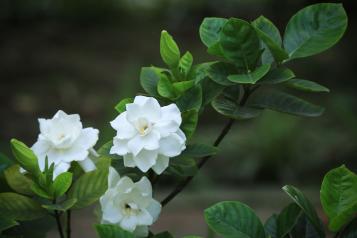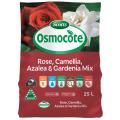

How to grow gardenia in New Zealand
Gardenia plants are warm climate flowering shrubs, cherished by New Zealanders for their beautifully perfumed blooms. These plants have glossy, dark green leaves throughout the year and feature white or yellow fragrant flowers in spring, summer, and autumn.
Gardenias thrive in a warm, sunny spot with protection from the harsh afternoon sun and frosts. While they might bloom more slowly in cooler parts of the country, their versatility as groundcover, hedging and decoration makes them a popular choice for Kiwi gardeners. They prefer rich, moist, slightly acidic soil and require consistent feeding. Use a gardenia-specific fertiliser that supports plant growth both above and below the ground for optimum results.
Gardenia planting equipment list
- Gardenia plant
- Scotts Osmocote® Compost & Soil Improver
- Garden shovel
- For potted gardenias: Scotts Osmocote® Rose, Gardenia, Azalea & Camellia Mix, Scotts Osmocote® Controlled Release Fertiliser: Roses, Gardenias, Azaleas & Camellias, and a suitable pot or container
Preparing to grow gardenia
Choose a position with partial shade suitable for your gardenia, and plant between September and January. Gardenias do best in locations protected from frosts and hot afternoon sun. They prefer moist, well-draining soil that is slightly acidic.
Prepare the gardenia planting area by mixing the Plant Food & Scotts Osmocote® Compost & Soil Improver into the soil. If you’re new to gardening, go over a pre-planting checklist to make sure you’re creating a garden space suited to your needs.
How to plant a gardenia in the garden
- Dig a hole twice as wide as the gardenia’s pot and the same depth.
- Gently remove the plant from its original pot and loosen the compacted roots.
- Place the gardenia into the prepared hole, backfill with soil, and water well.
- In a dry spot? Add Scotts Osmocote Mulch & Feed around the base to retain moisture and reduce weeds. Keep the mulch away from the stem. Find out how much mulch you need.
Planting gardenias in pots
- Select a pot at least 2–3 times the size of the original pot, with excellent drainage.
- Fill with Scotts Osmocote® Rose, Gardenia, Azalea & Camellia Mix.
- Remove the gardenia from its pot and gently loosen the roots.
- Plant into the potting mix, backfill with potting mix, and water thoroughly.
- If your potted gardenia runs the risk of drying out, you can add Scotts Osmocote Mulch & Feed to the surface around the gardenia.

Gardenia care in New Zealand
Consider our top maintenance best practices to ensure optimal results when caring for gardenias.
Fertilising gardenia
Apply Scotts Osmocote® Compost & Soil Improver in spring and autumn. For gardenias in pots, use Scotts Osmocote® Controlled Release Fertiliser: Roses, Gardenias, Azaleas & Camellias.
Troubleshooting: treating yellow or pale leaves
If you notice yellowing or pale leaves, it’s often a sign of nutrient deficiency. Apply an additional dose of fertiliser and check that the soil pH is slightly acidic using a soil pH meter, ideally between 5.5 and 6.5.
Cold weather or poorly drained soils can also cause leaf discolouration. If your gardenia struggles in the ground due to these conditions, consider growing it in a pot instead.
Growing gardenias in pots enable you to move the plant to a warmer spot or shelter it from excessive rain.
How to prune gardenia plants
To maintain a healthy and attractive gardenia plant, regularly deadhead spent gardenia flowers. In warm regions, you can prune gardenias during winter to shape them. In cooler climates, perform light pruning after blooming in spring, summer, or autumn.

Common gardenia pests and diseases
- Pests: Whiteflies, aphids, and scale insects may occasionally infest gardenia plants. Use an appropriate insect spray to control them.
- Sooty mould: This is a secondary issue caused by pests like scale or aphids. Treat infestations with a suitable fungus spray to prevent mould growth.
Gardenia planting FAQs
When do gardenias flower in New Zealand?
With proper care and a growing location protected from overexposure, gardenias will flower throughout spring and summer. Gardenias produce predominantly white flowers – though the Golden Magic variety flower turns yellow as it ages.
Are gardenias easy to care for?
Once planted, gardenias are relatively easy to care for. Ensure the soil or pot drains well, and the growing location is free from frosts and hot sun.
How far apart to plant gardenia hedge?
If you’re growing gardenia plants as a hedge, space them according to their variety. For example, the Gardenia Augusta “Radicans” may need less spacing than variety. Aim for at least 50-80 centimetres of space between plants – though you may want to provide greater spacing for larger varieties like the Fragrant Star variety. Aim for at least 50-80 centimetres of space between plants – though you may want to provide greater spacing for larger varieties.



